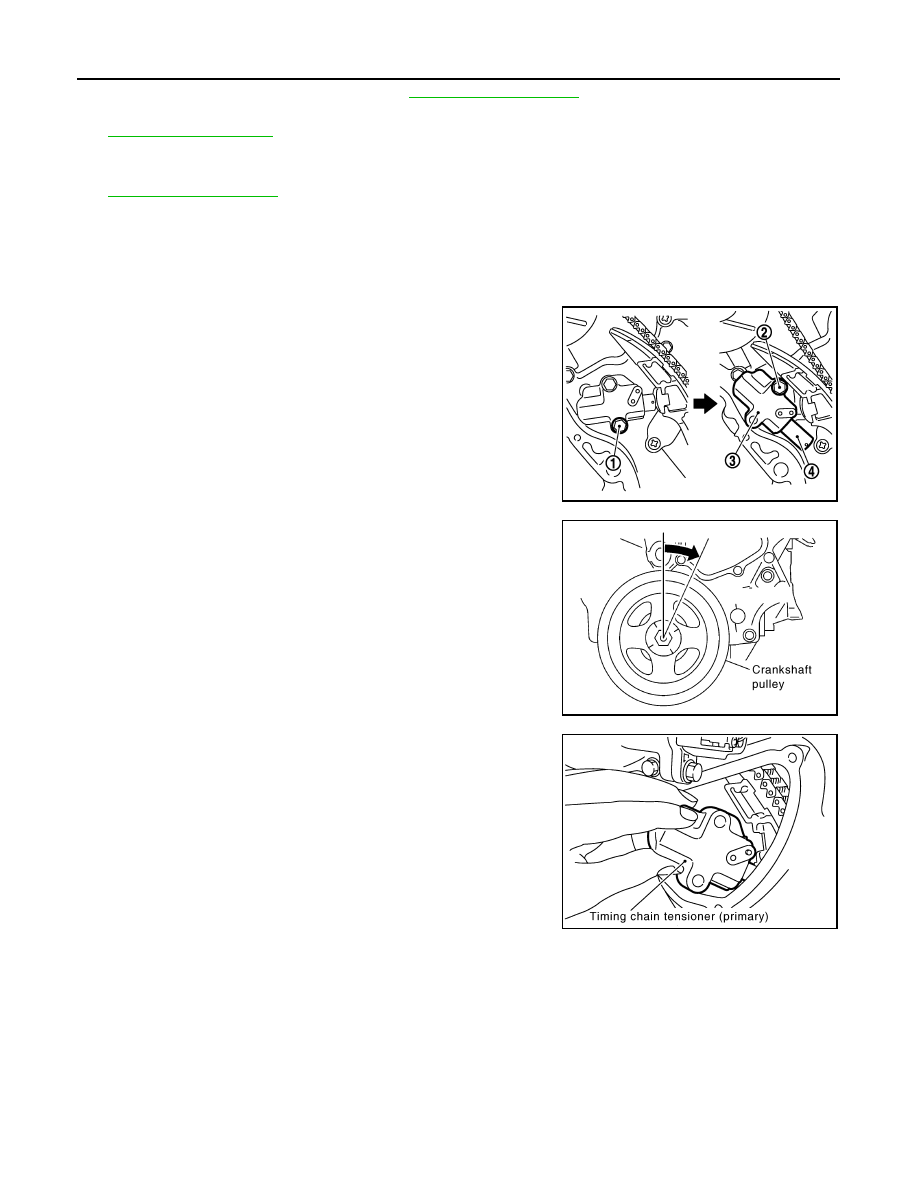Murano Cross Cabriolet Z51 (2013 year). Manual - part 27

CO-20
< REMOVAL AND INSTALLATION >
WATER PUMP
5.
Remove reservoir tank of radiator. Refer to
6.
Remove reservoir tank of power steering oil pump with piping connected, and move it to aside. Refer to
.
7.
Support oil pan (lower) bottom with transmission jack.
8.
Remove engine mounting insulator (RH), engine mounting bracket (RH) and upper torque rod. Refer to
9.
Remove water drain plug (front) on water pump side of cylinder block to drain engine coolant from engine
inside.
10. Remove valve timing control cover (bank 1) and water pump cover from front timing chain case.
• Use the seal cutter [SST: KV10111100 (J-37228)] to cut liquid gasket for removal.
11. Remove timing chain tensioner (primary) as follows:
a.
Remove lower mounting bolt (1).
CAUTION:
Never drop mounting bolt inside timing chain case.
b.
Loosen upper mounting bolt (2) slowly, and then turn chain ten-
sioner (primary) (3) on the mounting bolt so that plunger (4) is
fully expanded.
NOTE:
Even if plunger is fully expanded, it is not dropped from the body
of timing chain tensioner (primary).
c.
Turn crankshaft pulley clockwise so that timing chain on the tim-
ing chain tensioner (primary) side is loose.
d.
Remove upper mounting bolt, and then remove timing chain ten-
sioner (primary).
CAUTION:
Never drop mounting bolt inside timing chain case.
12. Remove water pump as follows:
JPBIA0085ZZ
PBIC4820E
PBIC3576E
Revision: 2012 October
2013 Murano CrossCabriolet